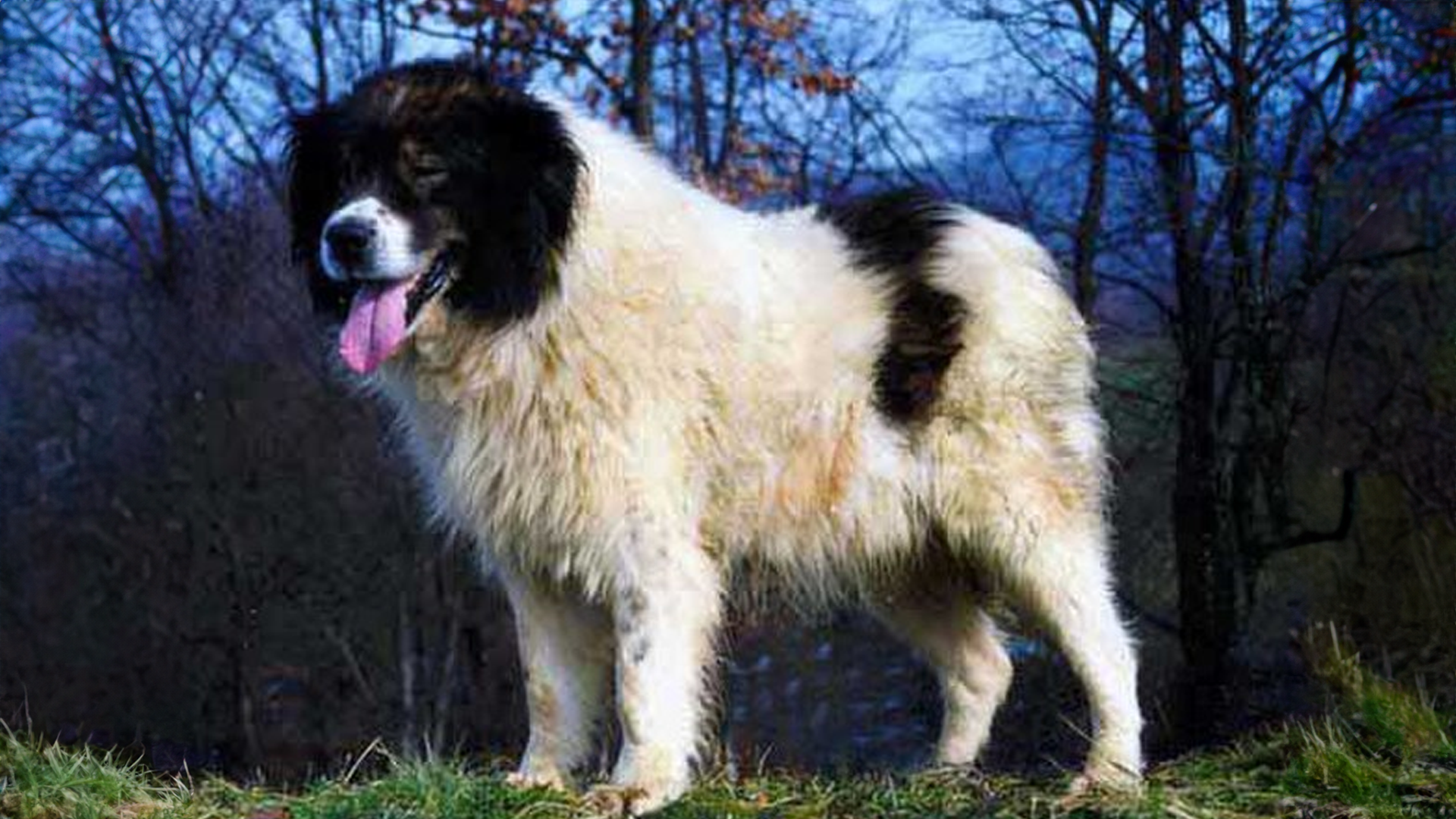
I thought I would share a little about myself! I am a part of the Foundation Stock Service Group of Dogs. I tend to weigh 62lbs and after I get into the dog food and peanut butter jar I can weigh up to 110lbs. Some people describe me as Amiable, Brave or Intelligent. I'll usually be in your life for around 12 to 14 years so make sure you are ready for a long-term commitment!
Tornjak
The Tornjak is a large and powerful breed from Bosnia and Herzegovina and Croatia, originally used for guarding livestock. Known for their calm and watchful nature, Tornjaks are protective without being overtly aggressive. They have a thick double coat and a robust frame, suitable for harsh climates. This breed is loyal and forms strong bonds with family members, often showing a gentle disposition despite their size.
Training
Higher ratings mean Tornjaks are easier to train while lower values mean they might take more time and effort to train
Training a dog can be one of the most rewarding experiences for both the pet and the owner. Some breeds and individual dogs are inherently easier to train due to their intelligence, eagerness to please, and quick learning abilities. This article will provide tips on how to effectively train an easier-to-train dog and how to advance their training to more complex tasks.
Before diving into training, it’s important to understand that each dog has its own unique learning style. Easier-to-train dogs often possess the following traits:
Positive reinforcement is one of the most effective training methods. It involves rewarding your dog with treats, praise, or toys whenever they perform a desired behavior. This method encourages them to repeat the behavior.
Clicker training uses a small device that makes a clicking sound to mark a desired behavior. The click is followed by a reward.
Start with basic commands that are essential for good behavior and safety:
Once your dog has mastered basic commands, you can challenge them with more complex tasks. This not only enhances their skills but also keeps their mind stimulated.
Easier-to-train dogs often enjoy learning tricks that are both fun and mentally stimulating.
Agility training is a great way to keep an active dog engaged and fit. Set up an obstacle course with jumps, tunnels, and weave poles.
Dogs have an incredible sense of smell, and scent work can be a highly rewarding activity.
Social
Higher ratings mean Tornjaks are more social and initially friendly while lower numbers mean these dogs can be more scared or timid
When considering the demeanor ratings for different dog breeds, it’s important to remember that these ratings are based on general trends and past data. While certain breeds might have tendencies towards specific personality traits, individual dogs can exhibit a wide range of behaviors that deviate from the breed standard.
Dog demeanors refer to the general temperament and behavior patterns commonly observed in dogs. These traits include how a dog interacts with people, other animals, and its environment. Understanding a dog’s demeanor can help potential owners predict how the dog might fit into their lifestyle and what kind of training and socialization the dog might need.
Scared Personalities
Wary/Reserved Personalities
Cautious Personalities
Friendly Personalities
Social Butterfly Personalities
The personalities of dogs are influenced by a variety of factors, including:
While demeanor ratings provide a useful guide to understanding general breed characteristics, they are not definitive. Each dog is an individual with its own unique personality shaped by training, environment, and the influence of its owner. Therefore, it’s essential to consider these factors and approach each dog as an individual, providing the care and training needed to help them thrive.
No results available

Finding a Friendly, Local Veterinarian has never been easier. LocalVeterinarians.com makes it simple to find Local Veterinarians, Veterinary Clinics, Doctors, Emergency Vets, Animal Hospitals and Pet Care Health Services. Search by location and see detailed information about each Local Veterinarian, including their services, website link, and contact information.
Click to Ask Anything!